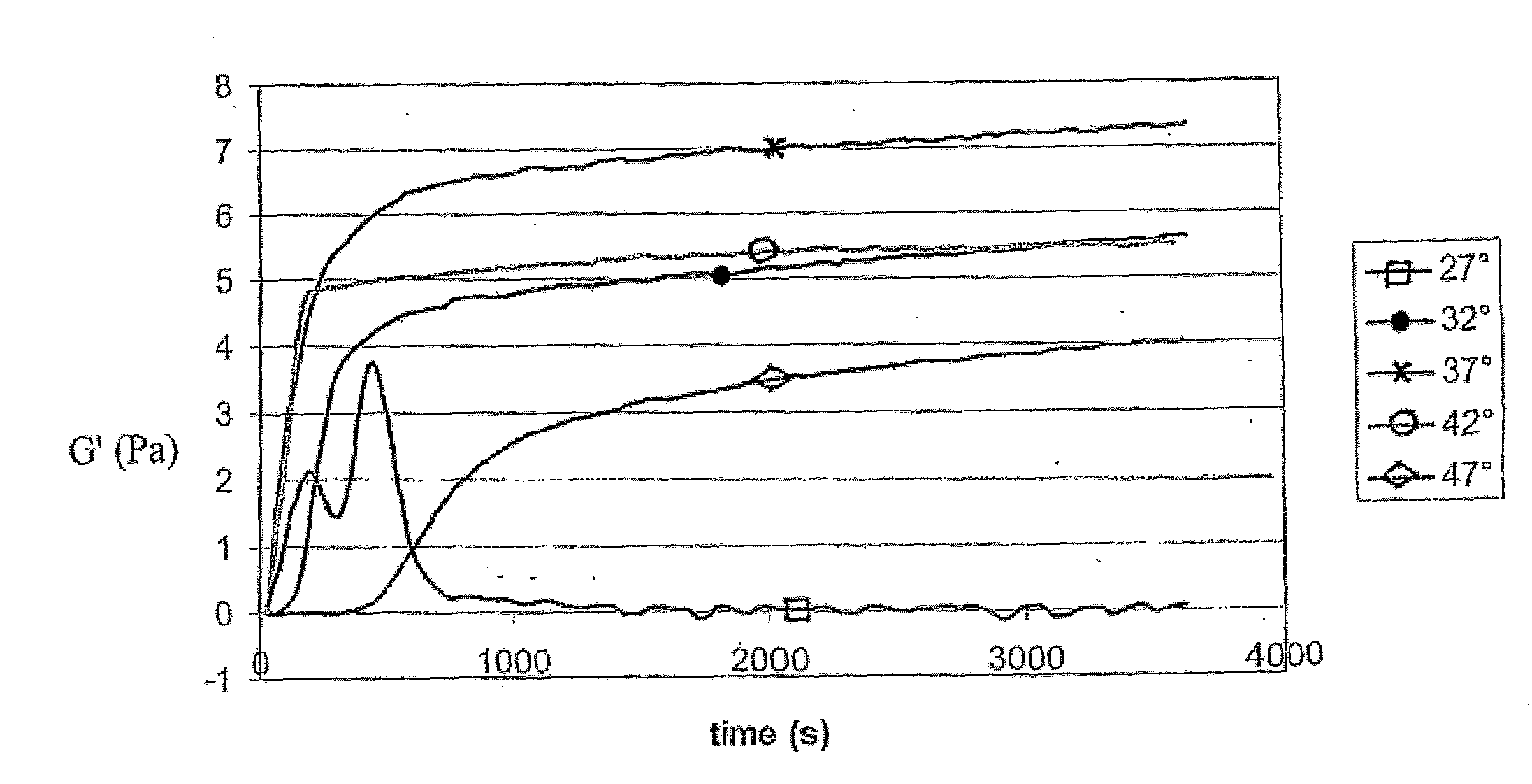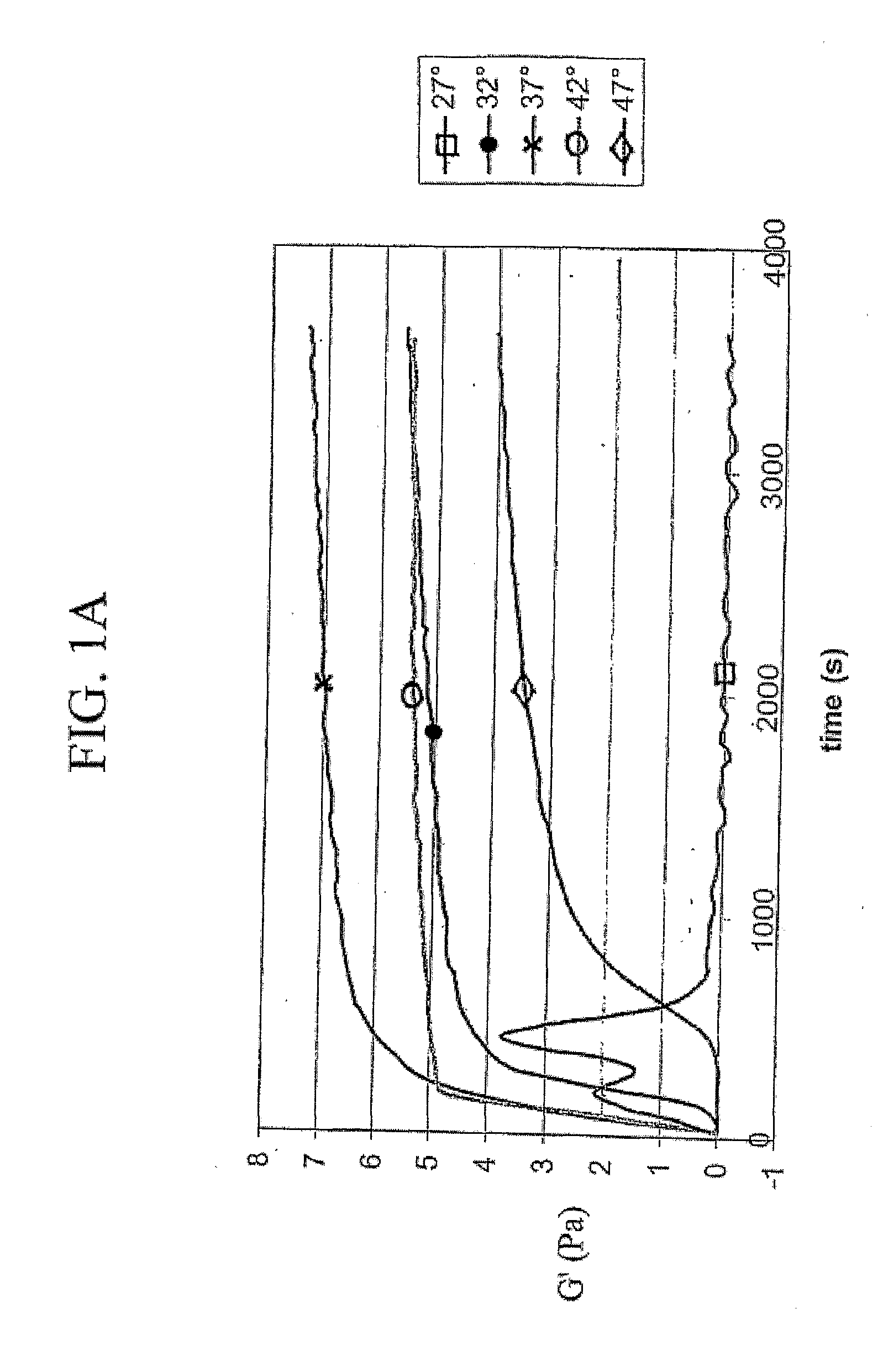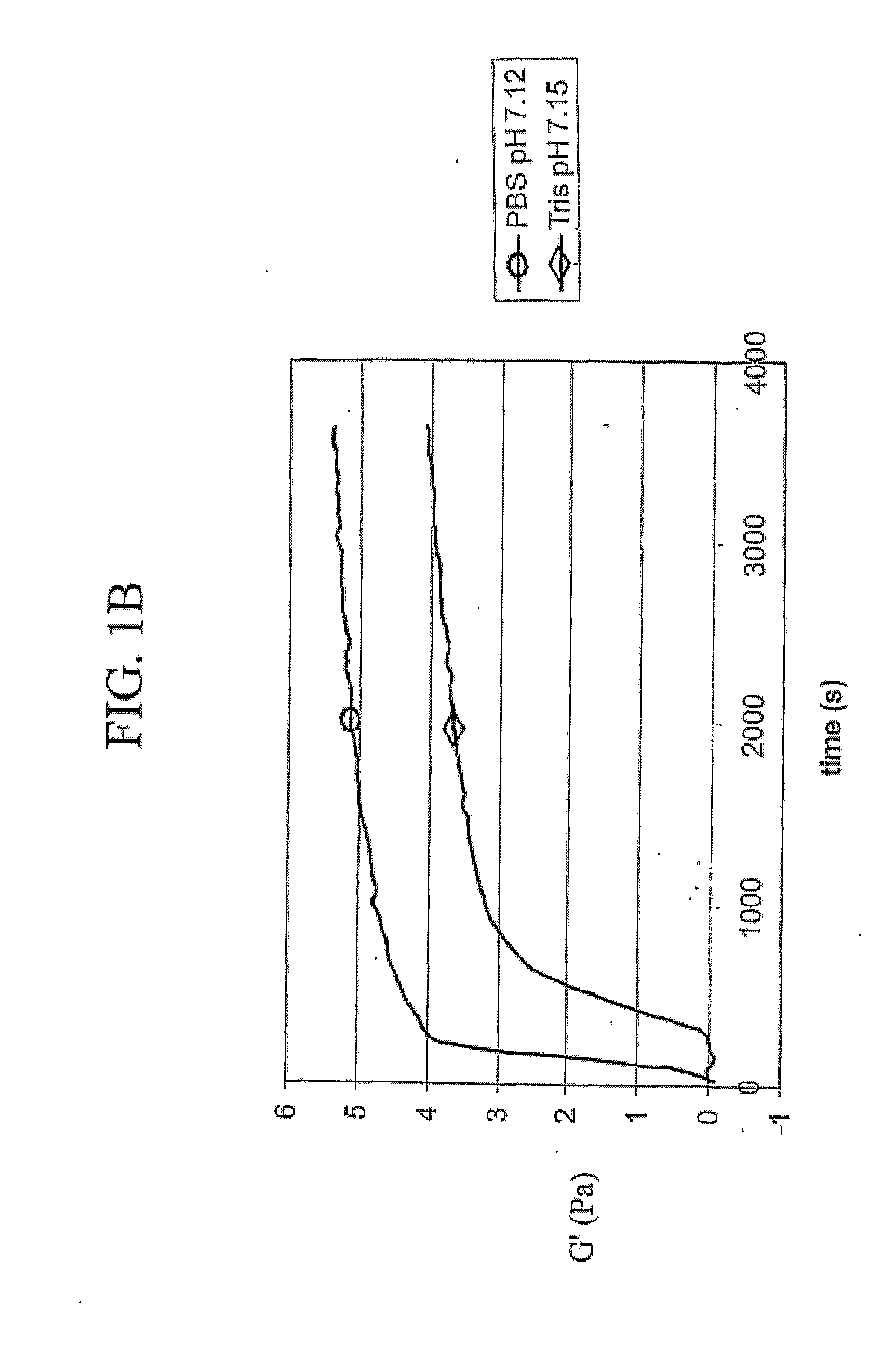Engineered Extracellular Matrices
a technology of extracellular matrix and matrices, applied in the field of engineered extracellular matrix, to achieve the effect of enhancing tissue repair
- Summary
- Abstract
- Description
- Claims
- Application Information
AI Technical Summary
Benefits of technology
Problems solved by technology
Method used
Image
Examples
example 1
Preparation of Lyophilized, Bioactive ECM Composition
[0101]Small intestinal submucosa is harvested and prepared from freshly euthanized pigs (Delphi Ind.) as previously disclosed in U.S. Pat. No. 4,956,178. Intestinal submucosa is powderized under liquid nitrogen and stored at −80° C. prior to use. Digestion and solubilization of the material is performed by adding 5 grams of powdered tissue to each 100 ml of solution containing 0.1% pepsin in 0.01 N hydrochloric acid and incubating for 72 hours at 4° C. Following the incubation period, the resulting solubilized composition is centrifuged at 12,000 rpm for 20 minutes at 4° C. and the insoluble pellet is discarded. The supernatant is dialyzed against at least ten changes of 0.01 N hydrochloric acid at 4° C. (MWCO 3500) over a period of at least four days. The solubilized fractionated composition is then sterilized by dialyzing against 0.18% peracetic acid / 4.8% ethyl alcohol for about two hours. Dialysis of the composition is continue...
example 2
Preparation of Lyophilized, Bioactive ECM Composition
[0102]Small intestinal submucosa was harvested and prepared from freshly euthanized pigs (Delphi Ind.) as previously disclosed in U.S. Pat. No. 4,956,178. Intestinal submucosa was powderized under liquid nitrogen and stored at −80° C. prior to use. Digestion and solubilization of the material was performed by adding 5 grams of powdered tissue to each 100 ml of solution containing 0.1% pepsin in 0.01 N hydrochloric acid and incubating for 72 hours at 4° C. Following the incubation period, the solubilized composition was centrifuged at 12,000 rpm for 20 minutes at 4° C. and the insoluble pellet was discarded. The supernatant was lyophilized to dryness and stored.
example 3
Preparation of Reconstituted, Bioactive ECM Composition
[0103]Immediately prior to use, lyophilized material from Example 2, consisting of a mixture of extracellular matrix components, was reconstituted in 0.01 N HCl. To polymerize the soluble extracellular matrix components into a 3-dimensional matrix, reconstituted extracellular matrix solutions were diluted and brought to a particular pH, ionic strength, and phosphate concentration by the addition of a phosphate buffer and concentrated HCl and NaOH solutions. Polymerization of neutralized solutions was then induced by raising the temperature from 4° C. to 37° C. Various phosphate initiation buffers were used and the pH of the polymerization reaction was controlled by varying the ratios of mono- and dibasic phosphate salts. Ionic strength was varied based on sodium chloride concentration.
[0104]Type I collagen prepared from calf skin was obtained from Sigma-Aldrich Corporation, St. Louis, Mo., and dissolved in and dialyzed extensive...
PUM
| Property | Measurement | Unit |
|---|---|---|
| concentration | aaaaa | aaaaa |
| concentration | aaaaa | aaaaa |
| temperature | aaaaa | aaaaa |
Abstract
Description
Claims
Application Information
 Login to View More
Login to View More - R&D
- Intellectual Property
- Life Sciences
- Materials
- Tech Scout
- Unparalleled Data Quality
- Higher Quality Content
- 60% Fewer Hallucinations
Browse by: Latest US Patents, China's latest patents, Technical Efficacy Thesaurus, Application Domain, Technology Topic, Popular Technical Reports.
© 2025 PatSnap. All rights reserved.Legal|Privacy policy|Modern Slavery Act Transparency Statement|Sitemap|About US| Contact US: help@patsnap.com



